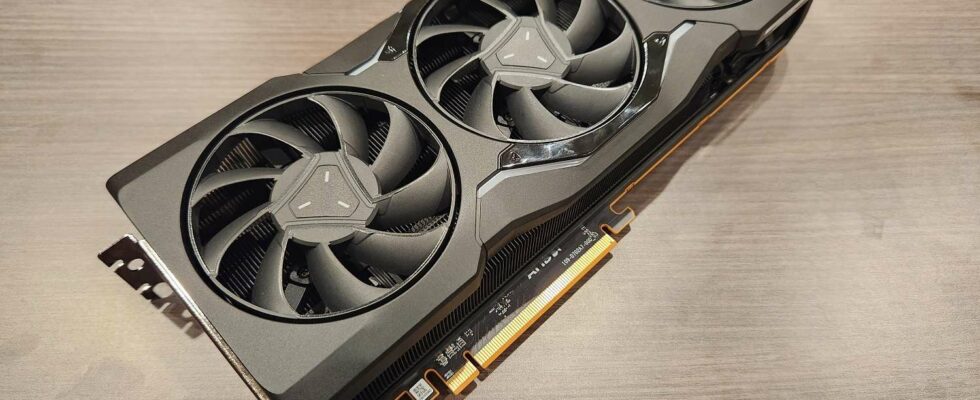Nvidia et AMD s’apprêtent à lancer de nouvelles cartes graphiques, mais AMD semble se retirer de la compétition haut de gamme, ce qui pourrait nuire aux consommateurs. Nvidia domine déjà le marché des GPU avec une part de 88 %, et les récentes fuites laissent entrevoir des prix excessifs pour les nouvelles RTX 50. L’absence de concurrence d’AMD risque d’entraîner une flambée des prix, soulignant l’importance d’un équilibre sur le marché pour maintenir des tarifs abordables.
Nvidia and AMD are gearing up to unveil new graphics cards in the coming months. As the competitive landscape shifts, it’s clear that the upcoming GPU releases will significantly impact which brand dominates the market.
Currently, AMD appears to be stepping back from competing in the high-end segment for this generation, a strategy that, while potentially sensible for them, spells trouble for Nvidia enthusiasts. As a gamer, the thought of Nvidia holding a monopoly over the mainstream GPU market is concerning.
A Cooling Rivalry
A healthy GPU market typically features ample stock levels, reasonable prices, and a vibrant competition among various key players. However, the GPU market seems to be sliding into a « unhealthy » state—not due to chip shortages, but rather because the rivalry between AMD and Nvidia has diminished, with little indication of improvement on the horizon.
The lull in GPU releases may be partially to blame, with Nvidia launching three new graphics cards at the start of the year. The updated RTX 40 Super series has been successful, especially the more affordable RTX 4080 Super and strong entries like the RTX 4070 Ti Super and the RTX 4070 Super.
In contrast, AMD has only introduced two GPUs this year. The RX 7600 XT, for instance, has barely outperformed its non-XT counterpart, just 6% faster but still priced significantly higher—between $50 to $60 more, several months after its release. Additionally, the RX 7900 GRE presented a commendable balance of cost and performance, creating high expectations for RDNA 4. Even without groundbreaking new GPUs this year, Nvidia continues to gain market share from AMD. Recent data shows that AMD held a 17% market share for discrete GPUs in Q2 2023, dropping to just 12% by Q2 2024. Meanwhile, Intel’s market presence has dwindled, from 2% to effectively 0%.
In early 2024, AMD reported a staggering 48% decline in year-over-year gaming-related revenue, with expectations for further deterioration in the latter half of the year. This situation leaves Nvidia comfortably holding 88% of the GPU market.
A Wise Yet Disappointing Strategy
For months, various leaks have indicated that AMD is not prioritizing the launch of a high-end RDNA 4 graphics card. If such a GPU ever existed, it seems to have been scrapped. Current projections suggest that AMD’s upcoming flagship might only match the RX 7900 XT in rasterization while falling behind in ray tracing performance. This renders the next-gen RX 8000 series competitive at best with Nvidia’s RTX 5070 Ti. It’s important to note that this speculation is based on leaks, as AMD has yet to reveal its plans for RDNA 4.
AMD does enjoy certain advantages, such as higher memory capacity in its GPUs compared to Nvidia, with Infinity Cache compensating for lower bandwidth. Furthermore, AMD has already adopted the DisplayPort 2.1 connector, whereas Nvidia will only include it in the upcoming RTX 50 series. However, if Nvidia incorporates GDDR7 memory across its lineup, the performance disparity between comparable cards could be pronounced. As it stands, Nvidia may remain unrivaled in the premium segment, with AMD’s flagship potentially only able to contend with the RTX 4080 Super.
While not a market analyst, it’s clear that AMD’s approach to target the mainstream market makes sense. With most gamers opting for more affordable options rather than high-end models like the RTX 5090, it’s understandable why AMD would focus on a segment where it can compete effectively.
This decision, while strategic, is concerning—not just for AMD supporters but for Nvidia fans as well. The lack of competition could ultimately hurt gamers looking for viable alternatives.
Concerns Over Pricing
Recently, leaks regarding Nvidia’s RTX 50 series pricing have surfaced, and the news hasn’t been encouraging. An anonymous source cited the potential prices for the RTX 5090 ranging between $2,000 and $2,500, with the RTX 5080 potentially costing $1,200 to $1,500, while the RTX 5070 could fall between $600 and $700.
This scenario illustrates how the absence of competition enables Nvidia to raise prices without concern. Nvidia’s lack of incentive to maintain reasonable pricing could lead to exorbitant price tags across its entire lineup.
Moreover, such inflated pricing wouldn’t just affect those eyeing the high-end RTX 5090. A $1,200 to $1,500 RTX 5080 is steep, especially considering Nvidia reduced the price of the RTX 4080 to $1,000 when it released a slightly revised Super version. Furthermore, a $700 RTX 5070 is $100 more than the original RTX 4070’s launch price, currently available for around $530.
Fortunately, the speculation around the RTX 5090 reaching $2,500
